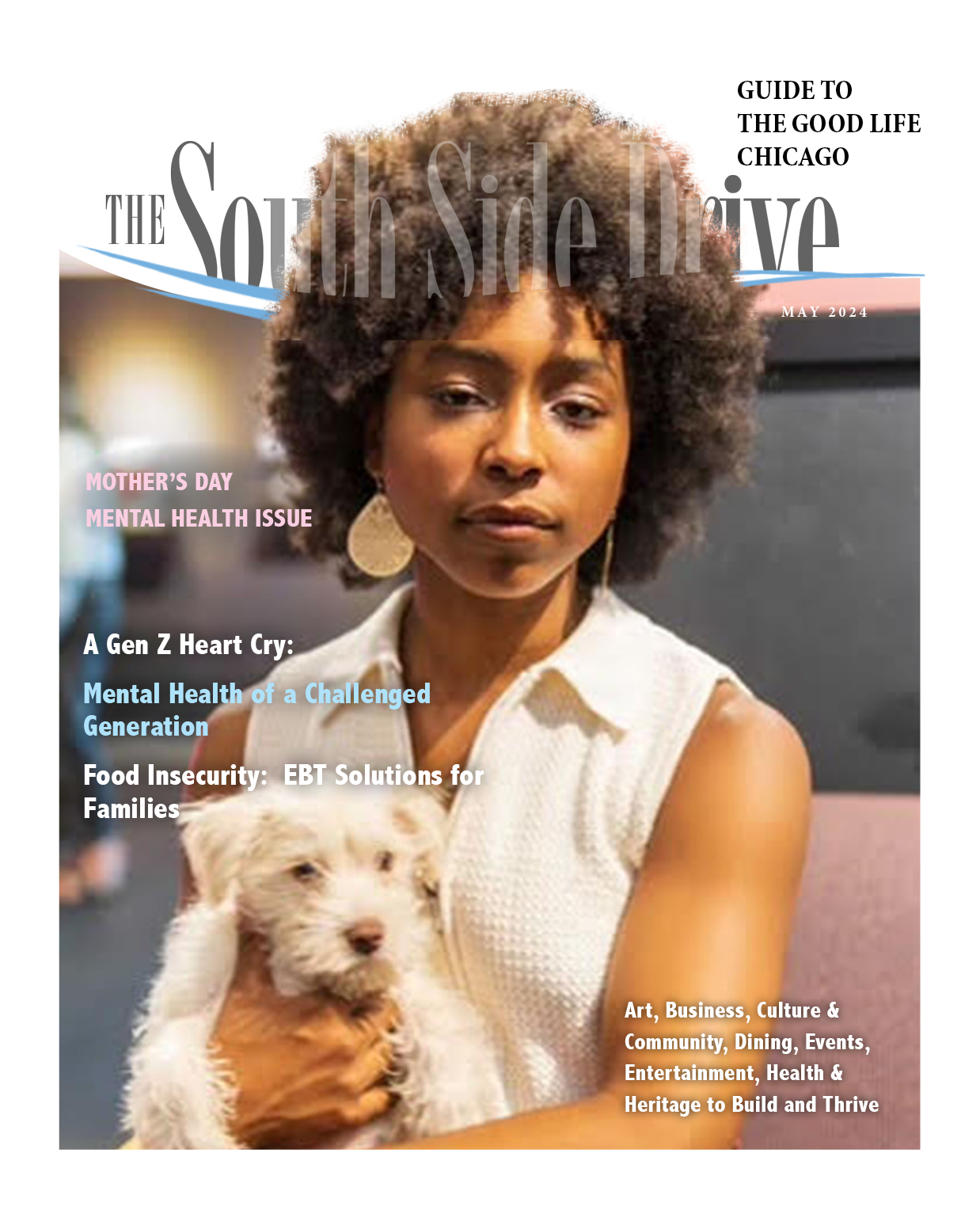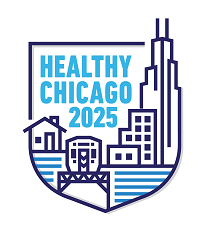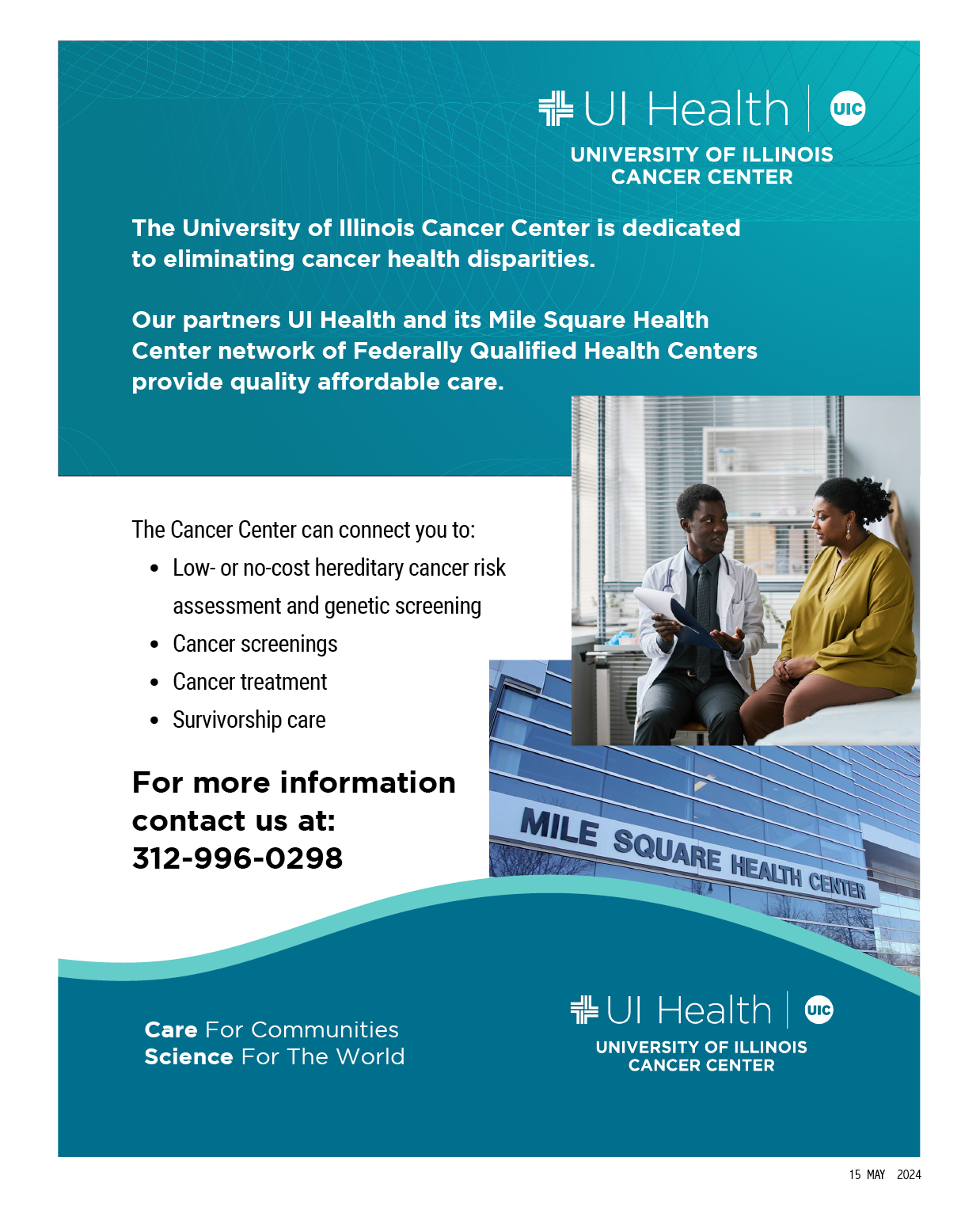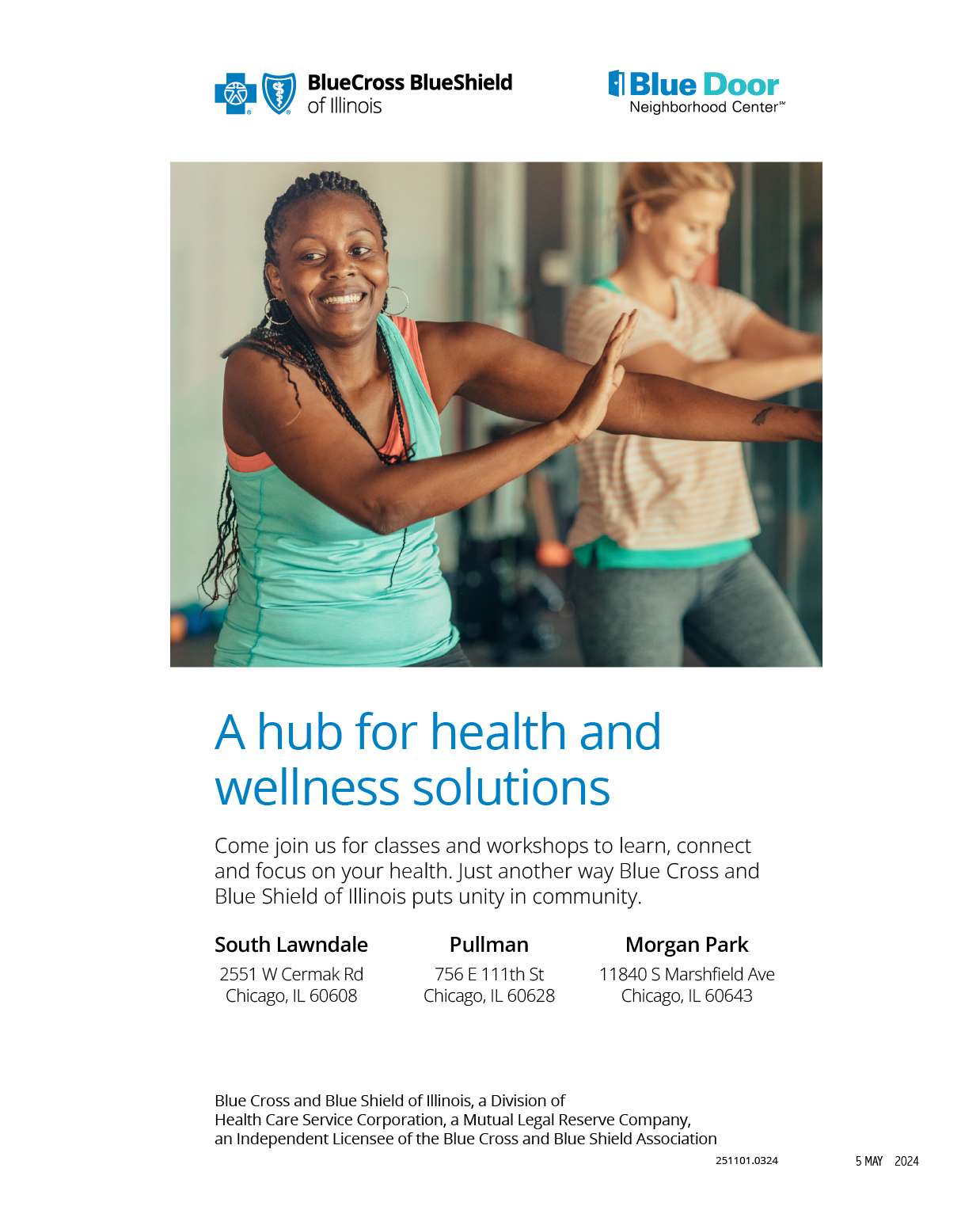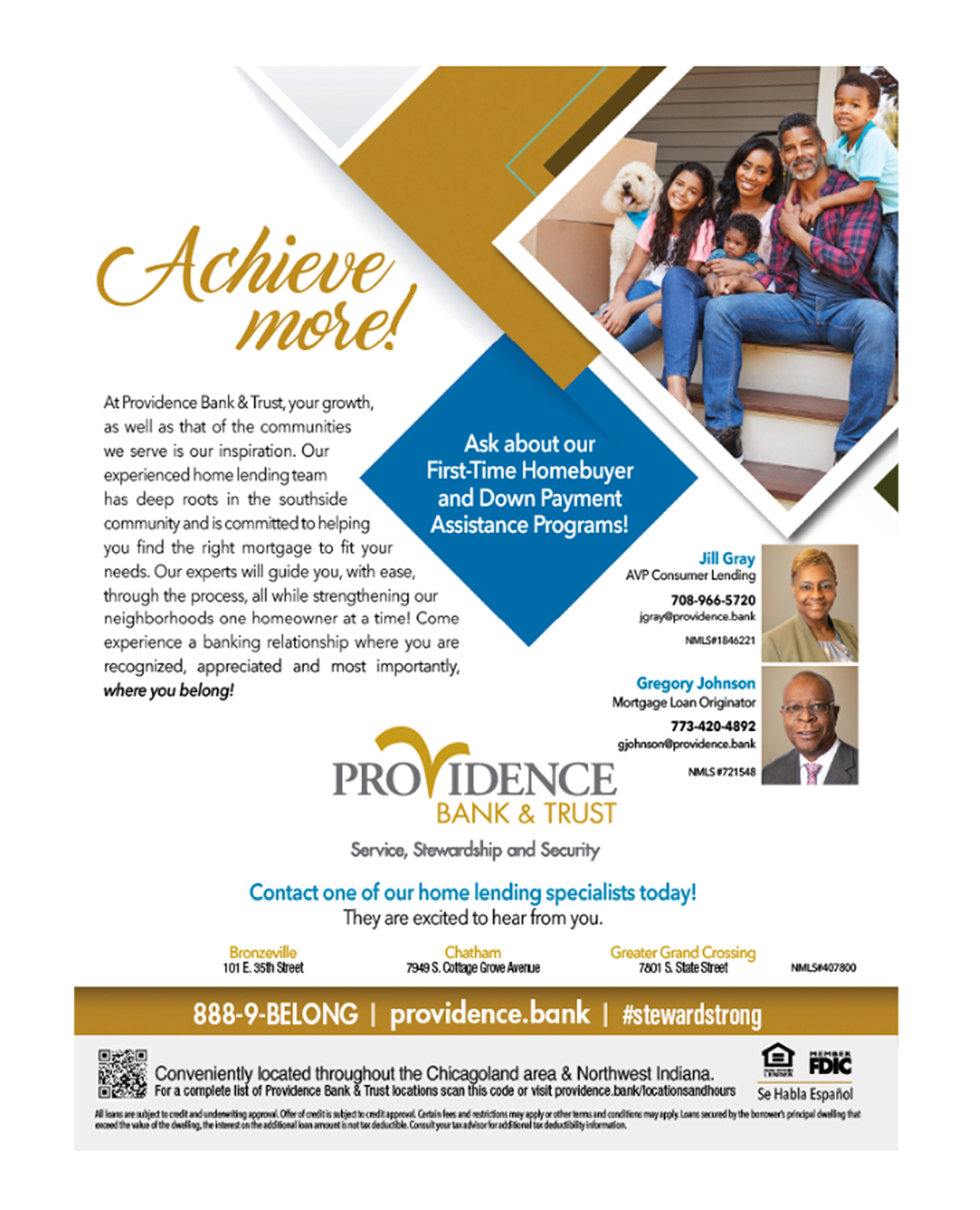The City of Chicago is committed to closing the Black-White life expectancy gap in our city. Did you know that between 2012 and 2017 life expectancy was falling for everyone but White and non-Latinx Chicagoans? That is an approximate 8.8 year gap between how long Black and White Chicagoans were expected to stay alive. That is quite a big difference!
Genese (Genny) Turner, MIPS is the Director of Health Equity and Strategic Partnerships for the Chicago De-partment of Public Health (CDPH). Part of Ms. Turner’s responsibilities includes supporting the implementation of the Healthy Chicago 2025 plan. “Every 5 years we pub-lish a community health improvement plan as part of our certification,” she explains. “The current plan, Healthy Chicago 2025 has an ultimate goal of closing Chicago’s racial life expectancy gap.”
Healthy Chicago 2025, is the plan dedicated to closing the gap in the life expectancy for minorities. Simply put, the color of your skin should not determine how long you live or your quality of life. There’s nothing natural or inevitable about these trends. Together, we have the power to change this!
“In addition to looking to issues of mortality such as chronic disease and other health factors for improvement, we also need to look at structural and institutional rac-ism as underlying root causes for our social determinants of health,” says Ms. Turner. This includes the effects of decades of policy that segregated or displaced people by race and drove different levels of community investment across Chicago i.e. Red-lining. School closures. Service reductions. Over-policing. Predatory lending. In order to close the racial life expectancy gap, we must assure that all people of color have the opportunity to reach the vision of Healthy Chicago 2025 where “….all communities have power, are free from oppression and are strengthened by fair access to resources, environments and opportunities that promote optimal health and well-being”.
To develop the plan, CDPH and their strategic partners gathered information to answer questions at the core of the Healthy Chicago 2025 vision: How healthy are people who live in Chicago? Do our neighborhoods have equita-ble access to resources, opportunities and environments that promote optimal health and well-being? What un-derlying social and institutional inequities may be con-tributing to gaps in health outcomes?
In 2020, our city confronted an unexpected and near-ly unprecedented challenge: the COVID-19 pandemic. CDPH works to meet that challenge, Ms. Turner tells us, “By partnering with community organizations through-out the Chicago region who are developing outreach and engagement strategies related to COVID-19 vaccine equity. We have funded organizations to do activations within their neighborhoods because we recognize that the community organization understands the needs of their community members the best. And we are continuing these partnerships through the implementation of the Healthy Chicago Equity Zones.”
The Healthy Chicago Equity Zones initiative deploys hyper-local strategies to confront the social and environmental factors that contribute to health and racial inequity – supporting the ultimate goal of closing Chicago’s racial life expectancy gap.
Efforts have begun with community leadership of COVID-19 vaccination campaigns, including outreach and engagement during 2021 focused on increasing COVID-19 vaccination rates, and these efforts will evolve to confront factors that contribute to health and racial disparities, including healthcare and social service access, food access, housing conditions, community safety, and the physical and built neighborhood environments.
COVID-19 clearly showed how policies to address the racial inequities that impact people’s living conditions are public health issues, too. With the Healthy Chicago 2025 plan, Chicago is applying the lessons of COVID-19 to change how our city works – and, as importantly, who it works for.
“The Healthy Chicago Equity Zone model that we’ve established,” says Ms. Turner, “is the model that we hope to utilize for at least the next four years to deepen our investment in community co-lead and co-owned health equity solutions.”
A quick outline of important Healthy Chicago 2025 points:
The Healthy Chicago 2025 Vision: A city where all people and all communities are free from oppression and are strengthened and empowered by equitable access to resources, environments, and opportunities that promote optimal health and well-being.
The Healthy Chicago 2025 Commitment:
- To close the racial life expectancy gap, people affected by inequities must have the power to decide how the city’s progress is measured and monitored.
- Share resources, credit, results, and knowledge as we identify community needs and assets, conduct research, and analyze data.
- Transform policies and processes to foster anti-racist, multicultural systems
- Strengthen community capacity and youth leadership
- Improve systems of care for populations most affected by inequities.
- Further the health and vibrancy of neighborhoods.
Healthy Chicago 2025 Priority Areas:
- Housing
- Food Access
- Environment
- Public Safety
- Neighborhood Planning and Development
- Health and Human Services
- Public Health Systems
- Organizations
Healthy Chicago 2025 Priority Populations include:
• Black Chicagoans
• Latinx Chicagoans
• Low-income Chicagoans
• Communities disproportionately burdened by pollution
• Disinvested and gentrifying communities.
Healthy Chicago 2025 Guiding Principles
- Actively challenge and redress racist systems through our process and strategies.
- Highlight community strengths as we tell our stories.
- Recognize that trauma affects all individuals, communities, organizations, and systems, and support resilience and healing.
- Consider who benefits and who is burdened by our proposed solutions.
Promote equitable wealth building, affordability, and belonging. - Make sure that community members, including youth, have power in decision making.
 As CDPH and its partners continue to support strategies around the themes of Healthy Chicago 2025 throughout this year, and the next and the next and the next, they strive to find ways to improve the systems of care by population and implement healthy community initiatives that address social and environmental factors at the neighborhood level. They will also continue to expand and improve core programs such as maternal and child health and chronic disease prevention, “This is because we recognize chronic disease prevention is a primary driver of health outcomes,” stated Ms. Turner, “And healthy communities can encompass the many factors needed to create healthy neighborhoods and have healthy people who live in those neighborhoods.”
As CDPH and its partners continue to support strategies around the themes of Healthy Chicago 2025 throughout this year, and the next and the next and the next, they strive to find ways to improve the systems of care by population and implement healthy community initiatives that address social and environmental factors at the neighborhood level. They will also continue to expand and improve core programs such as maternal and child health and chronic disease prevention, “This is because we recognize chronic disease prevention is a primary driver of health outcomes,” stated Ms. Turner, “And healthy communities can encompass the many factors needed to create healthy neighborhoods and have healthy people who live in those neighborhoods.”
Ms. Turner tells us that “Some of the other CDPH pro-grams related to Healthy Chicago include expansion of mental health and violence prevention services, and working to strengthen substance abuse and treatment initiatives. That has been in response to recent increases in opioid-related overdose deaths,” CDPH is also implementing a better-coordinated system of care for people who need mental health support and increasing investments in things like suicide prevention and community behavior health workers. Ms. Turner concludes by sharing that the “success of the plan will rest on “ensuring we continually use the guiding principles in program development and follow a plan of change that works with communities to assess data, co-create solutions, advance policy, and system-level changes, evaluate out-comes together”.
Healthy Chicago 2025 is a roadmap for how we can make health, racial equity, and shared prosperity the hallmarks of the great city of Chicago. The plan is a call to action for partners both within and outside of government, encouraging everyone to answer this question: How can I help make a healthier Chicago?
To learn more, about Healthy Chicago 2025, please go to https://www.chicago.gov/city/en/depts/cdph/provdrs/healthy_communities/svcs/healthy-chicago-2025.html.
